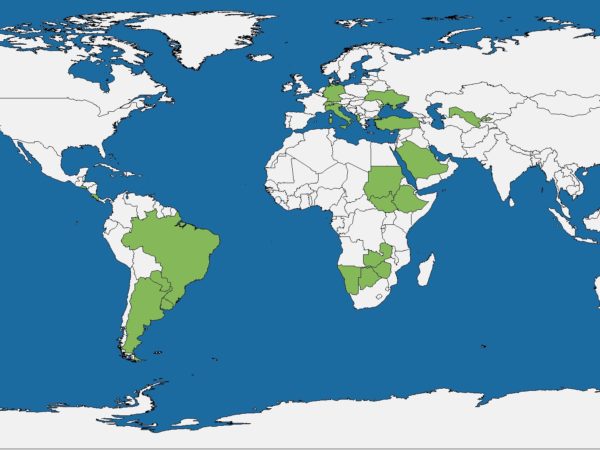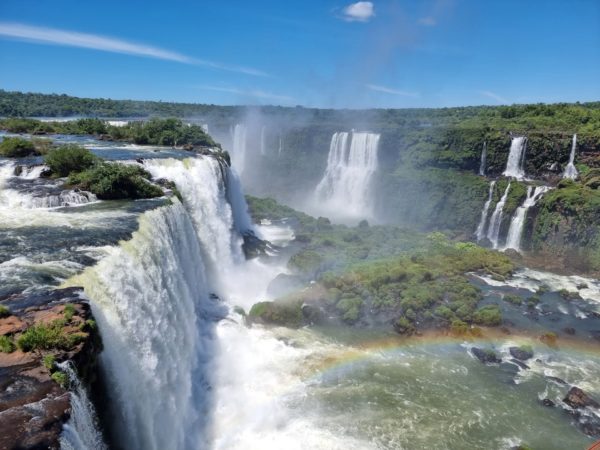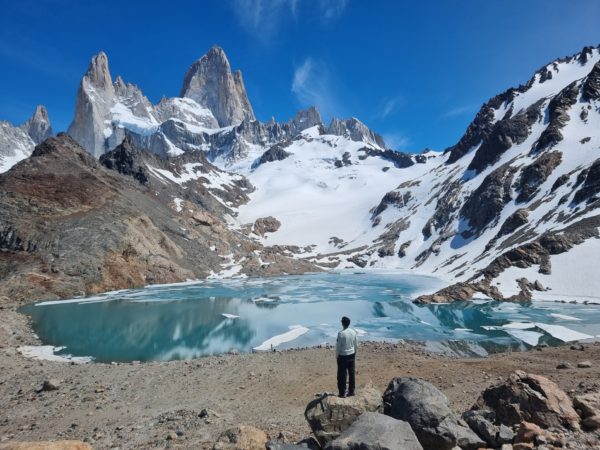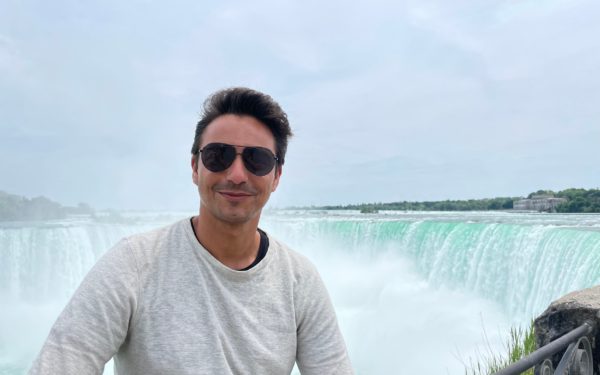Trip report: Paraguay
Visited in October 2021
Paraguay, you don’t make it easy for tourists, do you?
Although South America is a continent that attracts millions of travelers each year, only few of them visit Paraguay. In fact, the only tourists I know who have been to Paraguay are like-minded travelers who want to visit every country in the world. But even among those it seems to be more common to take a short half-day trip to Paraguay from Iguazu Falls in Brazil or Argentina rather than stay longer in the country.
When I prepared for my trip to Paraguay, I also realized the reason why. For a country larger in area than Germany or Japan, Paraguay offers shockingly little for tourists. None of the country’s main attractions seemed to me as absolutely worth seeing (with two small exceptions, more on that later). Besides, when you google “Paraguay itinerary” you will find mostly one to seven-day trips, so basically very short routes for a country as big as Paraguay. As a consequence, it was also clear to me that I would like to get the Paraguayan passport stamp on a short day-trip when I visit Iguazu Falls someday.
Fate then ensured that it did not happen exactly that way. When Argentina announced that it will reopen its borders to tourists in November 2021, the destination for my last big trip in 2021 was set. However, there was a catch. Argentina (and also Uruguay, another country I wanted to visit on that trip) reopened their borders on a Monday.
In order not to waste the weekend, since in this case I would have had to fly from Europe on a Sunday evening, I used Paraguay as the starting point of this trip. So I could start my trip already on a Friday evening and spend the weekend in Paraguay before Argentina reopened on Monday. Two more travel days is not that bad, right? However, my plan that I would tick off Paraguay as a day trip from the Iguazu Falls was also discarded. The new plan was that I would fly to the capital Asunción and then travel overland to the Iguazu Falls.
I would be lying if I said I had high expectations for Asunción and I even told my girlfriend Kati that the first stop of our three-week trip might be the least interesting. Nevertheless, the anticipation grew the closer this trip came. After all, it took me almost three years to return to South America. In 2018 I celebrated New Year’s Eve in Colombia, after that I had other priorities than South America for a year and then came the pandemic. While I diligently visited countries on other continents, the number of visited countries in South America remained at four out of twelve. In percentage terms, this was the lowest value on all continents.
One day in Asunción
That changed when our plane landed on a Saturday morning in Asunción. We took a flight with Air Europa, the low-cost subsidiary of Iberia, a terrible but cheap airline. The only airline that flies directly between Paraguay and Europe by the way. Perhaps another reason why Paraguay receives so few visitors. Only three cities outside of South America fly to Paraguay’s capital: Miami, Panama City and Madrid.
We had a full day in Asunción before we did the transfer to Foz do Iguaçu in Brazil the day after. The question now was what we should do on that day. Because, frankly, Asunción is similar to the whole country, there are relatively few interesting sights. TripAdvisor, for example, lists a shopping mall as the #1 attraction of the city. That is usually never a good sign.
So although there wasn’t much to do in terms of sightseeing, I still had a mission. I wanted to try the national dish of Paraguay. The Sopa Paraguaya, the only soup that is not a soup at all. In 2018, I had met three young Germans in Peru who lived in Paraguay and they told me about the food in the country. That’s where I first heard about the national dish.
One of my best friends is from Paraguay and said that I should try Chipa Guasú as well. That’s another national dish of Paraguay. The debate over which of the two dishes is the better one is apparently a frequent one. According to the cab driver who took us from the airport to the hotel, Sopa Paraguaya clearly wins that battle. Fortunately, he even told us the place where we could get both dishes in excellent quality.
But first we had other things to do, namely to see what kind of city Asunción is like. Since Asunción is not a city like Paris or New York, of which you see about five pictures every day on social media, I didn’t really have an idea what to expect here. But if I had to guess, I would have expected Asunción to be more in the category of San Salvador instead of Buenos Aires. That means: chaotic, rather run-down and generally not very attractive.
All the more I was surprised that Asunción was not at all like that. Our hotel was in the upscale neighborhood of Villa Morra, which was actually quiet and pleasant. Most visitors choose a hotel in Villa Morra because it has the reputation of being the safest in Asunción. As in most South American cities, crime is rather high in Asunción especially after sunset. In Villa Morra, however, you can still walk the streets even at night.
There is not really anything to do in Villa Morra except restaurants and bars, so we spent the day in the center of Asunción. Even there, I have to admit that I found the capital very pleasant. The city seems laid-back, the people (most of them equipped with a pitcher of mate tea) walk through the streets with a smile and in general I would describe Asunción as anything but ugly or run-down.
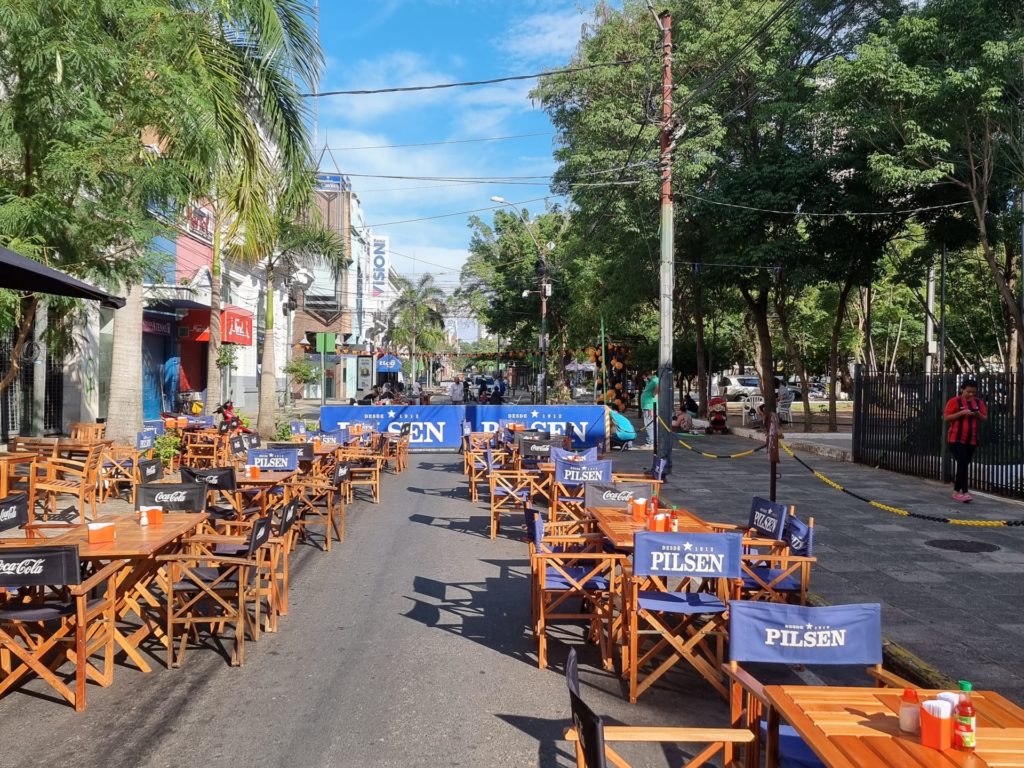
Furthermore, the city is quite green due to the many trees. At the same time, as typical for South American cities, Asunción has a lot of murals that make the city look colorful and joyful. To call the city gorgeous might be an overstatement. However, Asunción is a normal, decent city that might as well be anywhere in southwestern Europe.
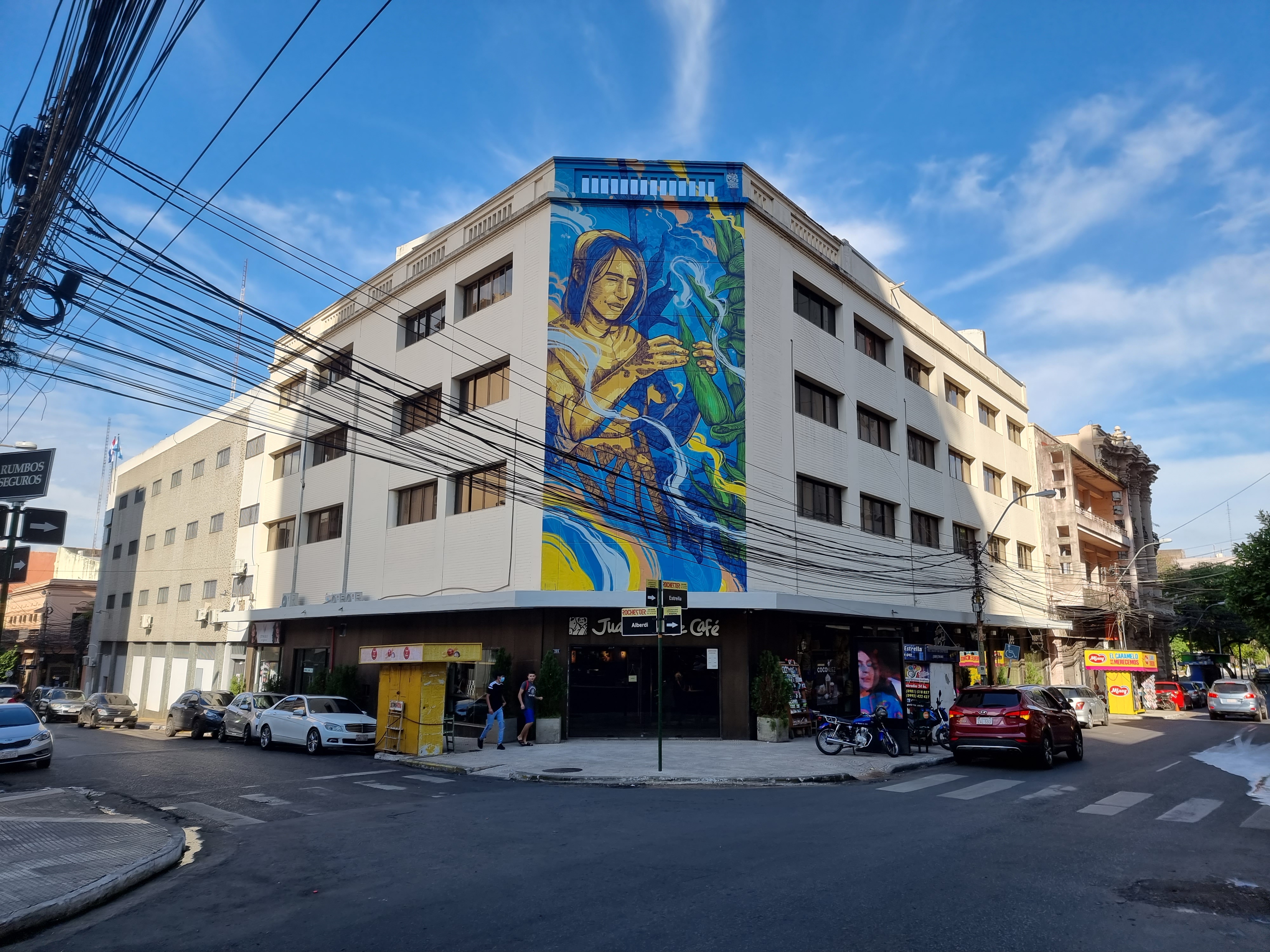
The fact that the city is rather boring in terms of sightseeing cannot be denied. I would argue that you need less than two hours to see the interesting places. Attractions such as the Panteón Nacional de los Héroes, the Casa de la Independencia as well as the Costanera de Asunción are within walking distance of each other.
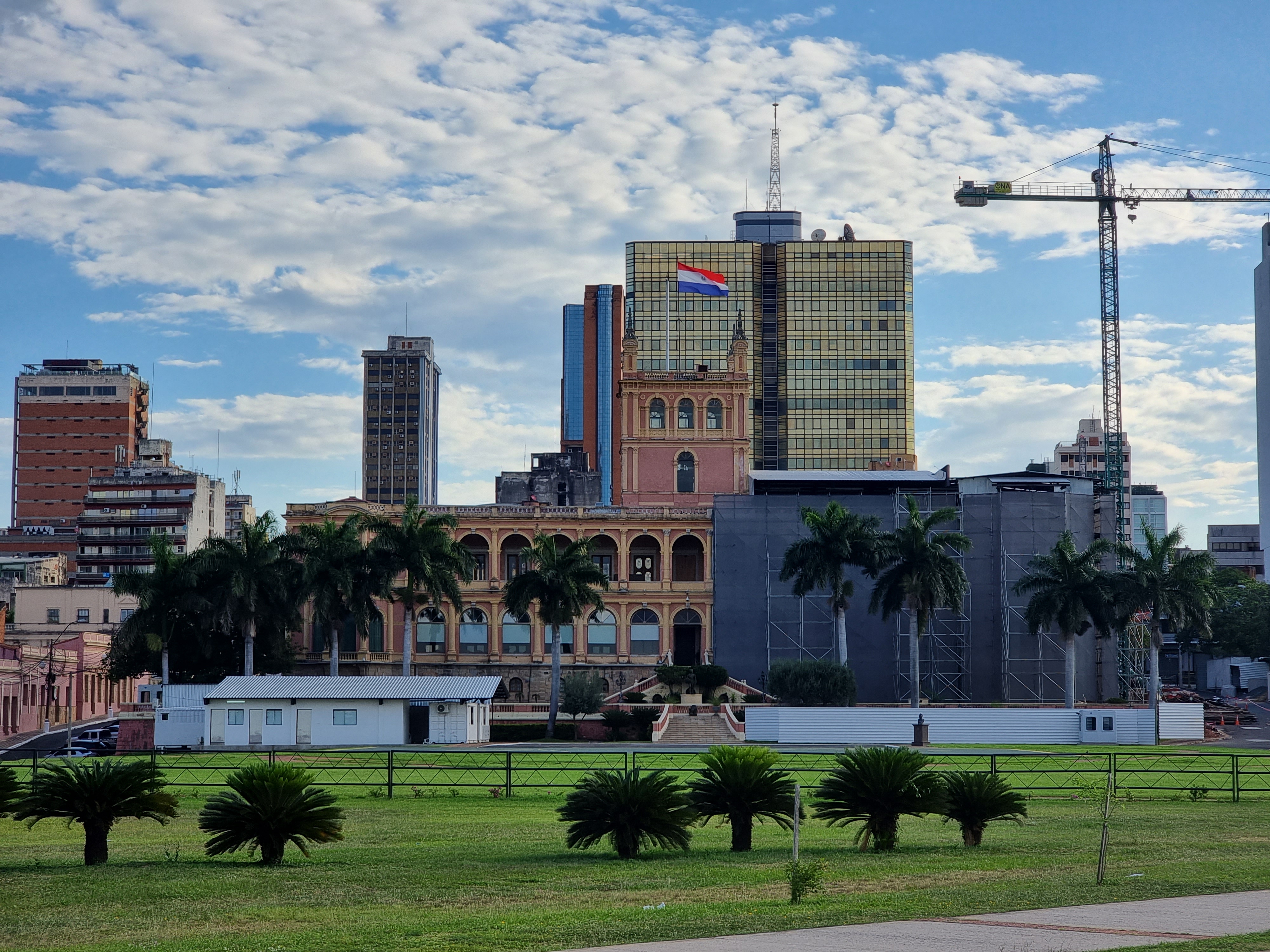
We also visited the Loma San Jerónimo quarter, which some travel blogs describe as the most picturesque place in the city. To be honest, I found it rather underwhelming and not worth a visit. But since it is just a 10-minute walk to the city center and you don’t have many alternatives anyway, I wouldn’t describe it as wasted time either.
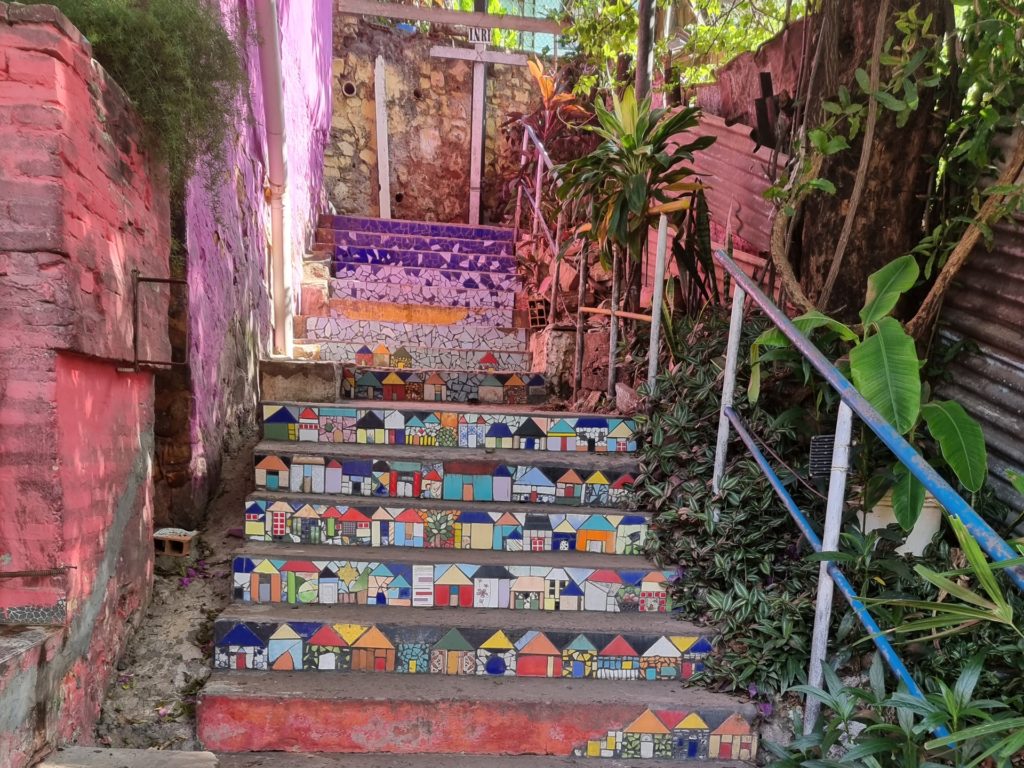
For museum lovers, of which I am not one, there would still be the Museo del Barro and others where you could pass the time. But to be honest, I really have to repeat that Asunción is not a city for sightseeing. None of the sights will make you absolutely thrilled. At least not me. Therefore, we spent our time in cafes watching the action on the street and enjoying the warm temperatures. Plus, we still had to try the national dishes…
Sopa Paraguaya or Chipa Guasú?
In the restaurant, which the cab driver recommended to us, we did not only order Sopa Paraguaya and Chipa Guasú but also Mbejú and Pastel Madío. So four national dishes, which were now in direct comparison against each other.
Sopa Paraguaya is a corn bread with onions and cheese. Chipa Guasú has basically the similar ingredients. It is called corn cake with onions and cheese, but it is much softer than Sopa Paraguaya and has whole corn kernels in it. Mbejú is a buttery cheese flatbread made from cassava or tapioca flour with crispy edges and Pastel Madío can most closely be compared to an empanada with beef.
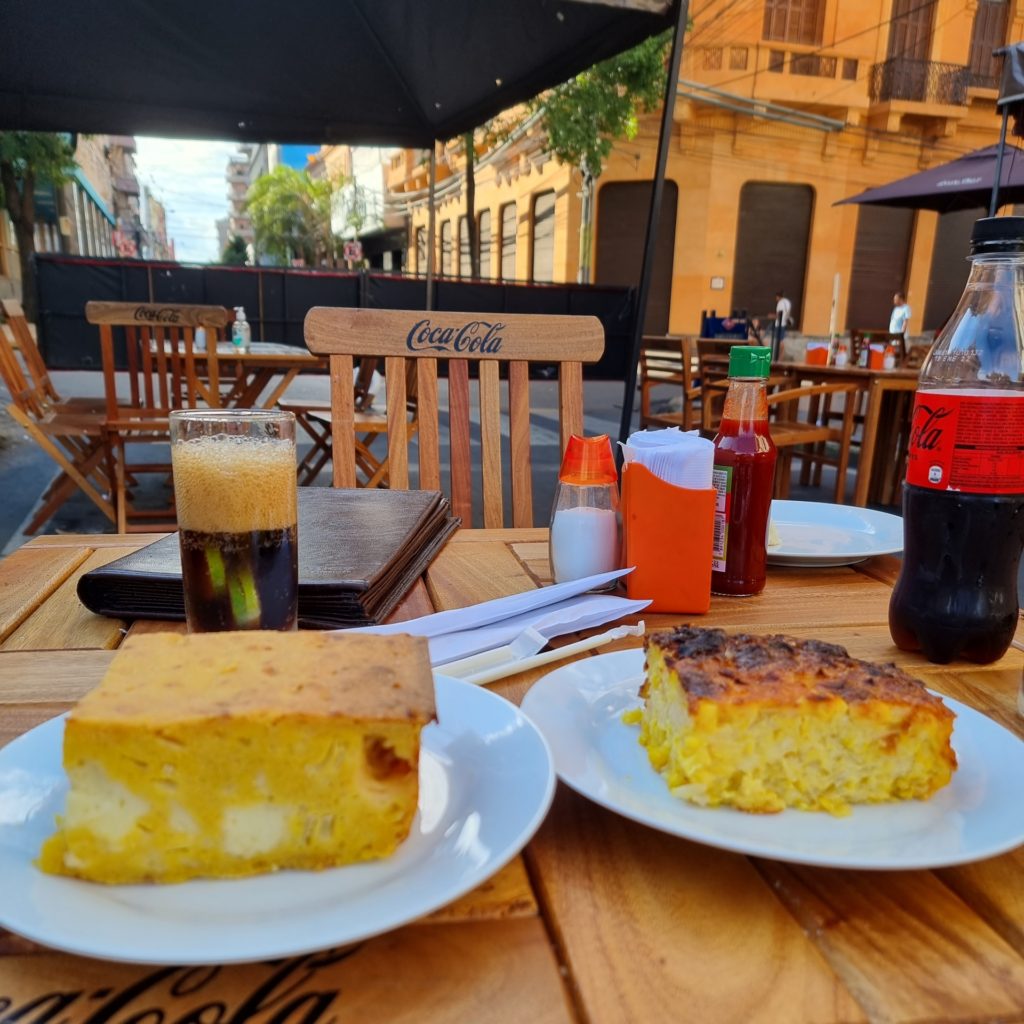
Chipa or Sopa? In our opinion, clearly Chipa! The ranking of the four dishes was unanimously chosen by us as follows: 1. Chipa Guasú, 2. Pastel Madío, 3. Sopa Paraguaya, 4. Mbejú. Chipa is indeed excellent and Pastel Madío was also good. Sopa Paraguaya was okay, but too dry for both of us.
We finished our afternoon in a rooftop bar named Negroni that offers great views over Asunción. Like everything in Paraguay, the prices for the drinks were really inexpensive. Even in a posh place like this. In total, we spent in Paraguay $65 for the hotel (4-star), $14 for the bus ride to Ciudad del Este, and $50 for cash at an ATM, of which we ended up with $20 left over.
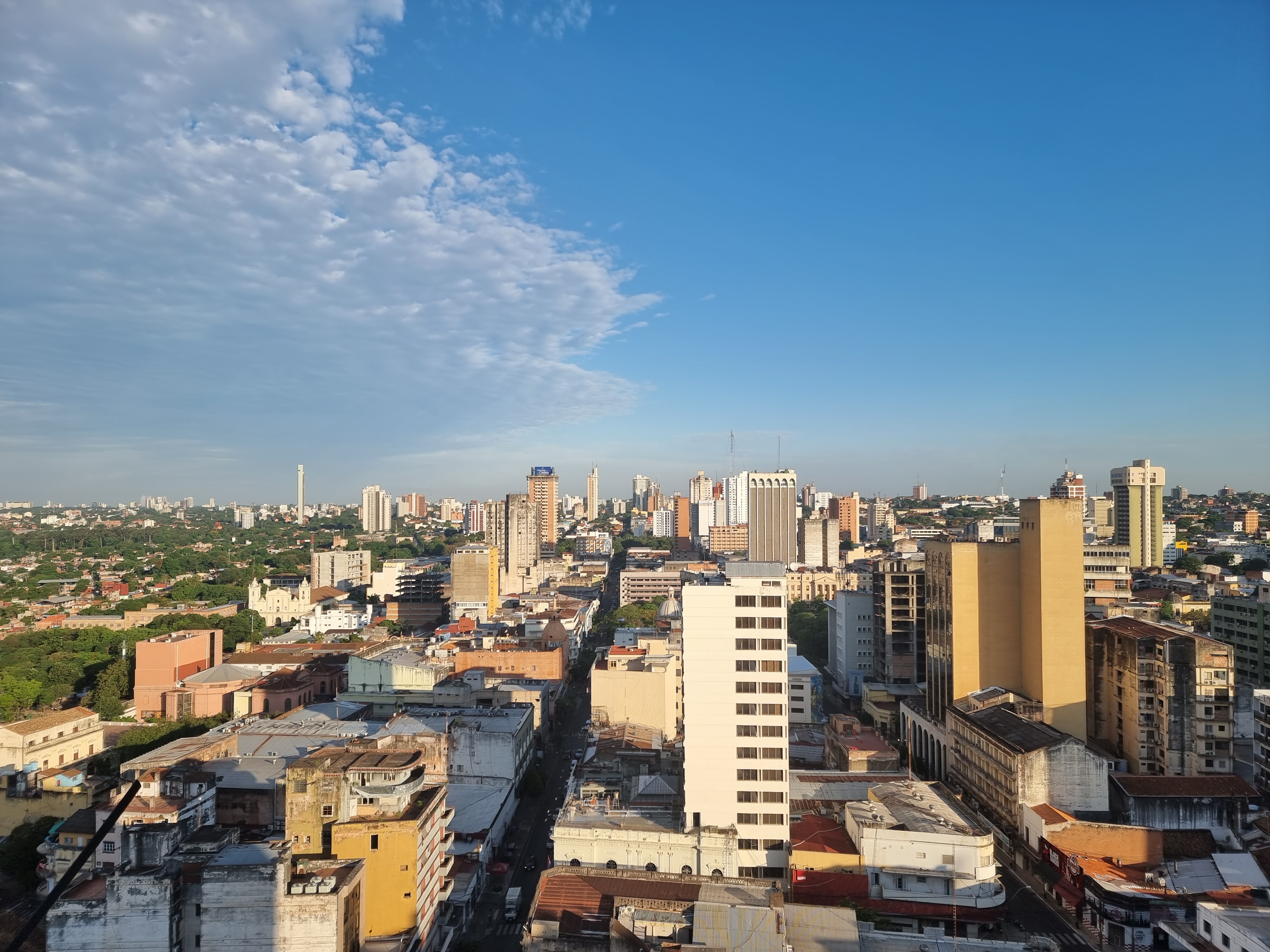
The rooftop bar was also our last activity in Asunción. I think enjoying a drink and having a good time is what Asunción is all about. My Paraguayan friend said that a Paraguay trip is not about sightseeing but about the people. I think he is absolutely right. If I ever go to Asunción again, it will be to get to know the locals better and go out with them in the evening. In our short stay we at least had the feeling that the people here are very warm and friendly towards foreigners.
As a conclusion to Asunción, it remains to say that the city is neither worthwhile nor a waste of time. Something in between. In terms of sightseeing, the city is certainly not too exciting, but you can undoubtedly spend a good time there.
From Paraguay to Brazil
The next day we took a bus to Ciudad del Este in the morning. The trip took just under six hours, but was quite pleasant thanks to the comfortable bus and the – as far as I can judge with my limited view from the bus – good roads. A cab for the equivalent of $9 then drove us from the bus terminal to Brazil. Our Paraguay stay was thus over after about 36 hours.
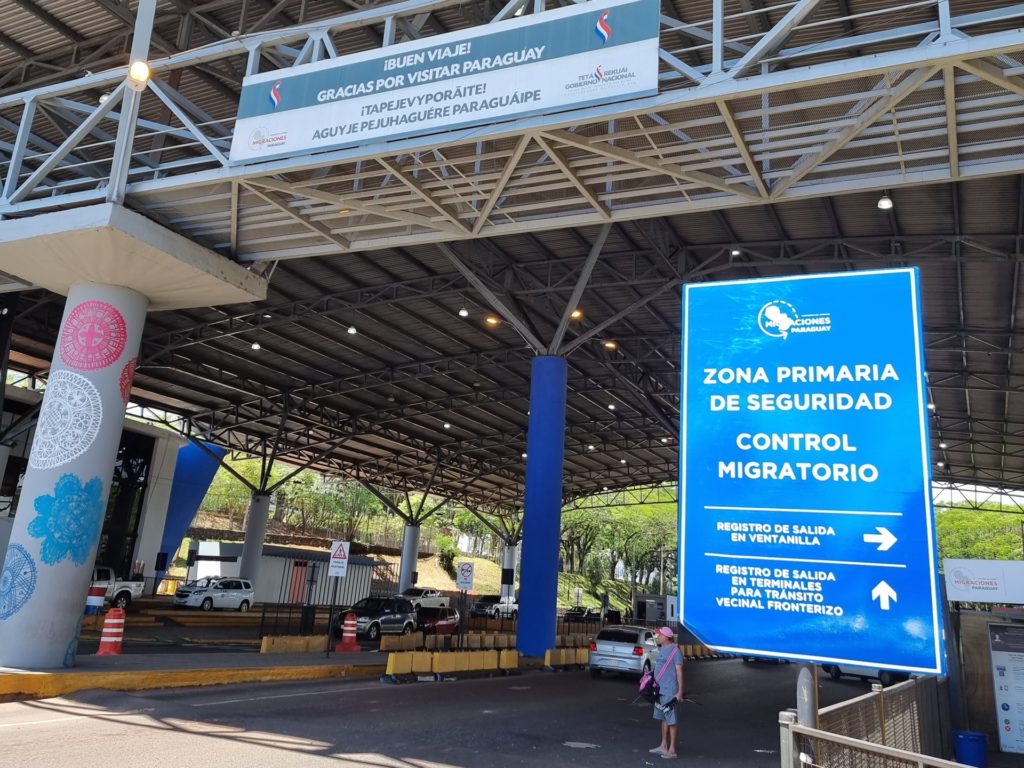
Although Paraguay will be remembered as a rather uneventful chapter in my journey to all the countries of the world, Asunción was still a good start to this South America trip. The city clearly exceeded my expectations and we had a good time there despite the few things to do.
Did I do Paraguay justice with only 36 hours? That is a difficult question. There would have been two more things in the country that I would have found interesting in principle. The Jesuit Missions in Trinidad (probably one of the least visited UNESCO World Heritage Sites in the world) and the Saltos del Monday.
When I was preparing for my trip to Paraguay, I first planned to visit one of these attractions besides Asunción. In the end, I refrained from doing so. I decided that a twice six-hour bus ride to the Jesuit Missions would not be worth it for me. I was close to the Saltos del Monday, since they are located near Ciudad del Este. However, with three days of Iguazu Falls ahead of me, my motivation to visit this waterfall as well was limited.
Another day in Paraguay would certainly have been nice, but would have deprived me of a travel day in Argentina. And when you read my Argentina trip report, you will understand why I preferred the places I visited there. What is nevertheless positive for me is that I visited Paraguay after all not only as a half-day trip from Foz do Iguaçu. So at least I saw the capital instead of Ciudad del Este, which not many travelers do.
